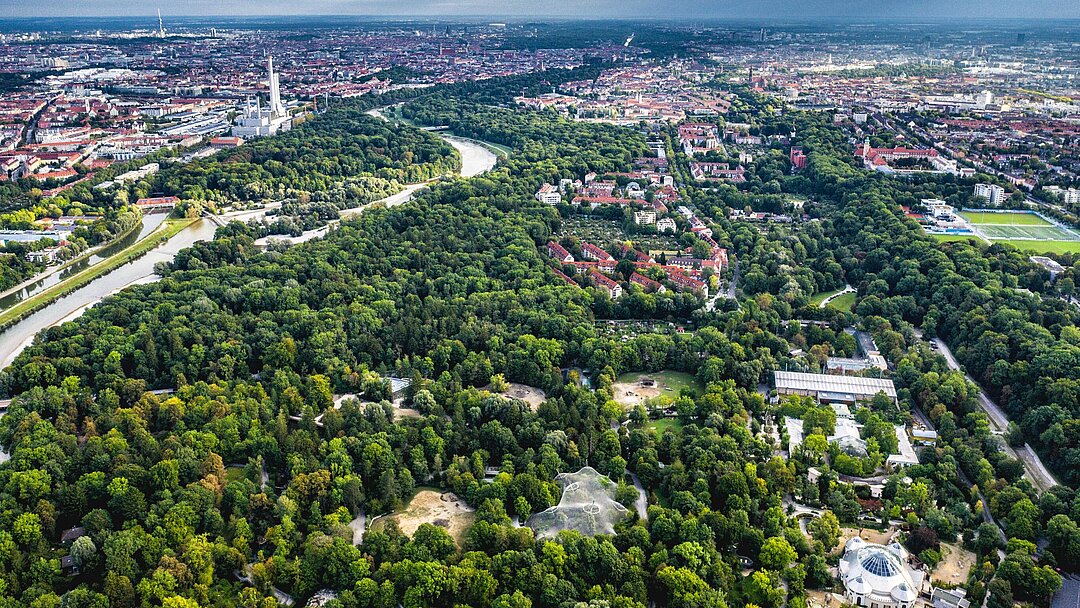
The impact of the pandemic continued into 2021, albeit not with the same severity as in 2020. The zoo was closed for a total of 86 days over the course of the year due to Covid-19 prevention guidelines imposed by the government, and after reopening in April had to implement numerous restrictions and safety measures.
Despite this, the zoo was able to increase the number of visitors by almost 28% to around 960,000 guests. The number of annual passes sold to regular visitors rose by more than 17% in the same period, which indicates clears signs of a recovery. Nevertheless, even with the more favourable figures, it was still not possible to achieve an income that came close to covering the costs, especially as the zoo had to continue paying the day-to-day expenses such as feed, energy, operating and maintenance costs as well as wages and salaries during the periods of closure and restricted operations.
“Financially, 2021 was another challenging year. However, we are relieved that the sales and revenue curve has clearly moved upwards again and that this trend is strengthening in the current financial year. Last year, we were once again able to rely on the loyal and far-sighted support of our main shareholder, the City of Munich, which guaranteed the continuation of operations and the continued existence of the zoo through their indispensable financial contributions. I would like to say a huge thank you - also on behalf of all employees and animal residents at Hellabrunn - to our chair of the supervisory board and mayor Verena Dietl as well as the entire city council of Munich!" said Rasem Baban, CEO and zoo director of Münchener Tierpark Hellabrunn AG. "In addition, we received many donations from friends of Hellabrunn Zoo, some of which came from far beyond our city, which we can really use and for which we are very grateful."
In terms of infrastructure and zoo population development, 2021 was a positive year overall. The zoo was able to continue construction work on the new lion enclosure according to plan. In addition, the red river hog enclosure was revamped, and work commenced on the extensive renovation of the wolf enclosure and the re-netting of the flamingo aviary. The venomous snake exhibit has also been modernised with upgraded technical installations and interior design, showing Hellabrunn Zoo’s commitment to continually improve the housing and care standards for its animal residents.
The animal-friendly and professional husbandry of the animals cared for at Hellabrunn Zoo are conducive to their reproduction, which was once again demonstrated by pleasing results for new births last year: The year started with the birth of a baby sloth in January, followed by more than a dozen Kunekune piglets, which were born in the Mühlendorf village in April. The baby boom continued with births by the Heck cattle, elk and pelicans. Another highlight of the year was the birth of a female South American sea lion pup, while its neighbours in the Polar World, the king penguins, also had chicks. The zoo population was also supplemented by new arrivals from other zoos, including llamas and alpacas, maned wolves and various bird species. In 2021, the zoo in Munich was home to a total of 539 species.
A project that captured the attention of the public was the release of two male alpine ibex born at Hellabrunn into the wild. In July 2021, the duo were reintroduced to their natural habitat in the Oberbergtal valley in Tyrol. The aim of the project, which involved close cooperation with Alpenzoo Innsbruck, is to help ensure the preservation of the population of this once almost extinct species. Other PR highlights include the successful April Fool's joke with the elephants and the Munich Fire Brigade, baby elephant Otto’s first birthday in November and various activities for Hellabrunn Zoo fans during the closure due to the pandemic. In addition, new educational learning stations were installed throughout the zoo in order to inspire visitors to learn even more about the animals living at Hellabrunn Zoo and local biodiversity.
Verena Dietl, chair of the supervisory board and mayor, summed up the year with a positive outlook, at what is now her second Annual General Meeting: “Hellabrunn Zoo is an important Munich institution for species conservation, environmental education, science and animal experiences that is loved by its citizens - and has been for many generations. It is therefore all the more pleasing to see that after an extremely difficult year in 2020, the company was able to get back on a much better course in the following year, despite the challenging conditions that still exist. That is why it was and is particularly important to me to ensure that Hellabrunn's future is secured without any doubt." She then added: "I would like to take this opportunity to thank the many Hellabrunn supporters and last but not least all the staff for their tireless commitment and the successes they have achieved". Zoo director Baban agreed: “Many projects would not be possible without the reliable support of my courageous and motivated team. I would also like to express my heartfelt thanks for their hard work.”
The Annual Report is now available for download at www.hellabrunn.de/geschaeftsbericht.